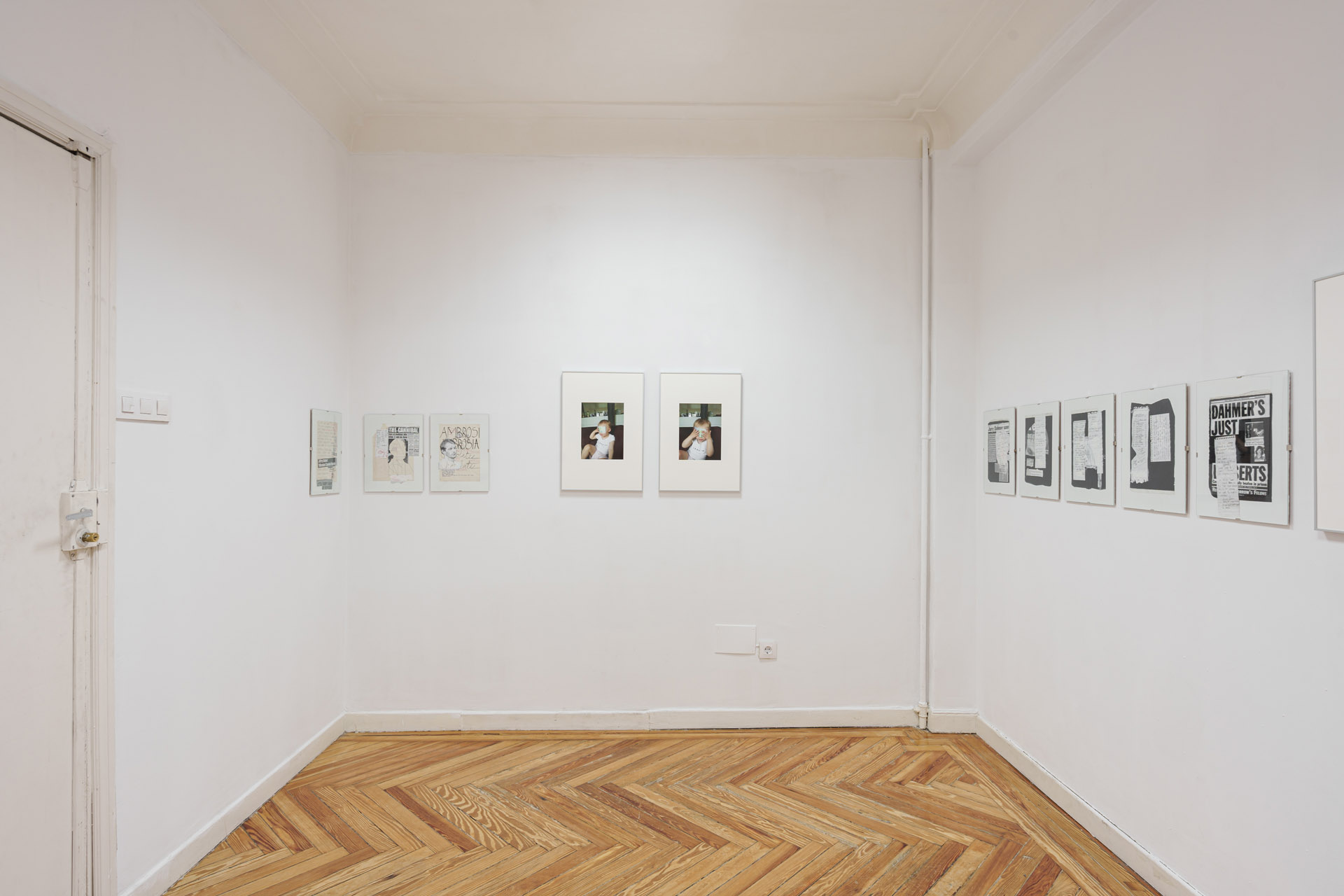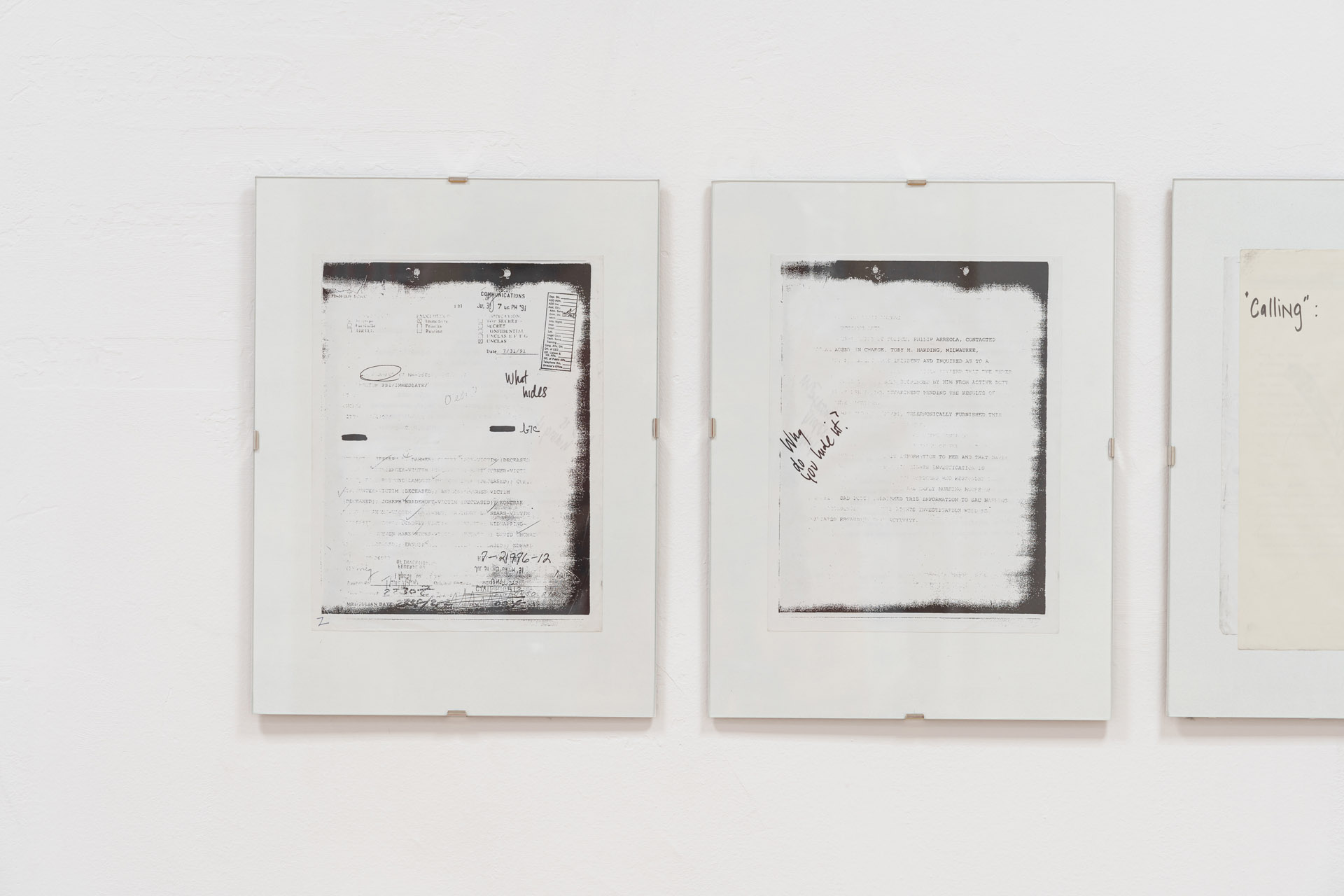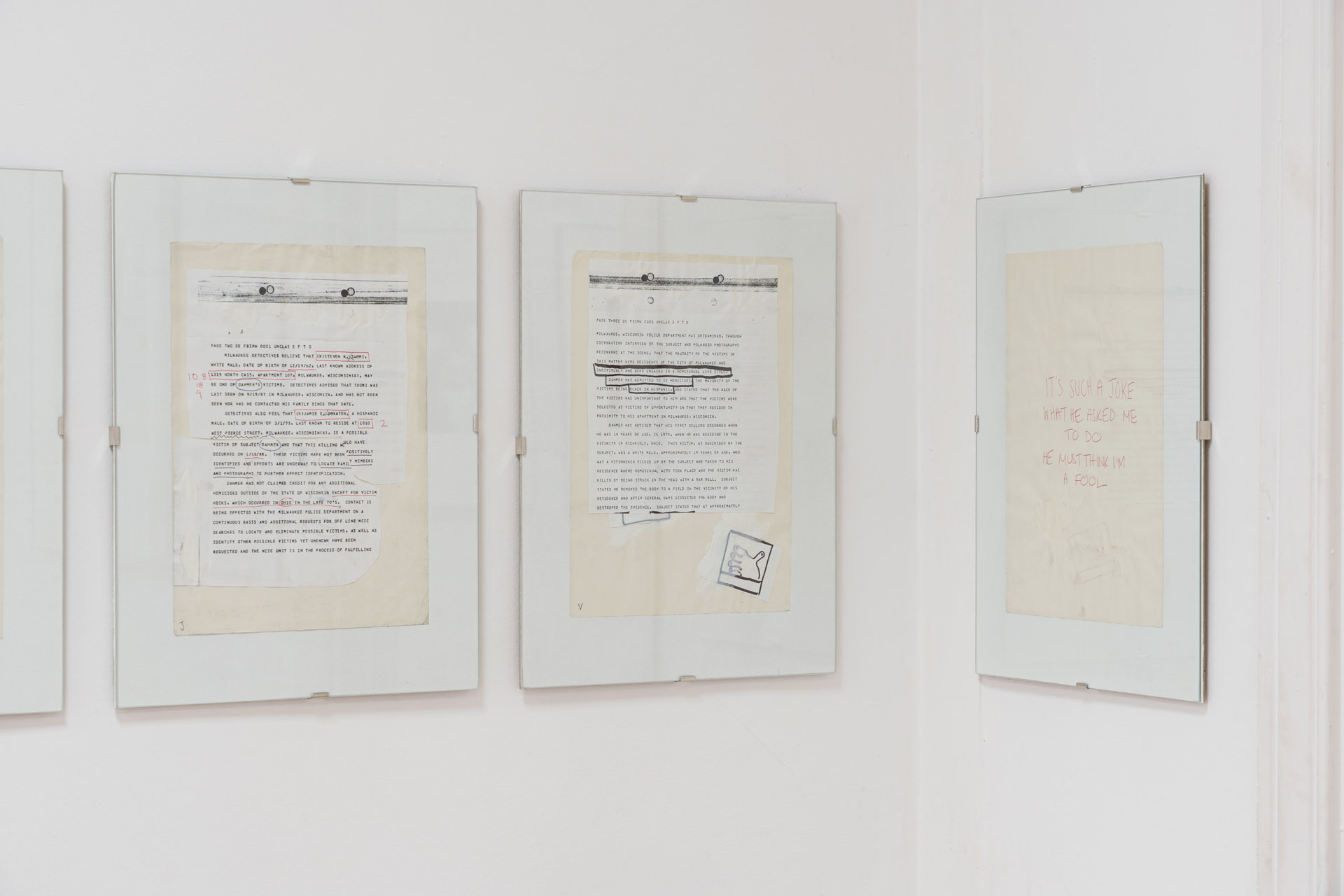Artists: Sitara Abuzar Ghaznawi, Jurrell Lewis, Douglas Watt, Angharad Williams, Bruno Zhu
Exhibition title: Spirit off
Venue: Yaby, Madrid, Spain
Date: November 5 – 28, 2021
Photography: Alejandro Cayetano / all images copyright and courtesy of the artists, Yaby and Galerie Maria Bernheim
The group show Spirit off brings together various approaches to the visual order based on observations on what is hidden, what goes unnoticed and the conventions of the public milieu. These works by Sitara Abuzar Ghaznawi, Jurrell Lewis, Douglas Watt, Angharad Williams and Bruno Zhu share an elaboration of the surface — whether spatial, textual or textile — and an interest in the conditions of visibility in which these surfaces are seen — material and cultural hierarchies, desire and social norms, conditions of access, conditions of production, etc. In her discussion of queer reading, Eve Kosofsky Sedgwick explains that the attention paid to the formal and immediately external aspect of a text doesn’t imply an evacuation of the interest in its passionate or ethical dimensions. On the contrary, for Sedgwick, this visceral formalism comes from a need for survival and is, precisely, the way to try to appropriate the capacity for permanence of certain cultural objects, the formulas of their powerful and refractory existence. Sedgwick uses the term overreading to describe this exercise of reading the formal surface with immoderate involvement — to overread is to smuggle, to add one layer too many, to infiltrate specificity, desire and expectations to counter the constant risk of suppression, in plain sight.
Episode 5 (Permanent Force) by Sitara Abuzar Ghaznawi is the last episode of a series of five collages that hint at different moments of reaction to the realization of finding oneself in a classist and eminently white environment: “acting elite,” “spiritual growth,” “anger management,” “the embarrassment” and “permanent force.” Ghaznawi uses highly coded materials to create formal compositions which call to mind the canonical language of Western abstraction: the grid is provided by some fragments of a checked bag woven out of plastic that is culturally associated with poverty, precarity and migration. The rest of the elements speak also of displacement and the need for preservation: shiny metallic foil, bubble wrap and plastic roses, all fixed to a backboard with tape. These vulgar materials, along with the specific social groups that they refer back to, are slipped through, formally sneaked into the space of art that excludes them based on a construction of good taste.
Jurrell Lewis’s Journal (Thoughts on Dahmer) is the result of a personal investigation of the story of serial killer and cannibal Jeffrey Dahmer — an investigation into his sexual practices, his victims and the narrative forms through which the case was publicly communicated in sensationalist tabloids as well as declassified legal and police documents. Since 2016, Lewis writes and draws over the papers that he collects, he cuts them up, glues them together, omits some things and adds others in. His collages compose a new density of surface, one that intercalates minoritarian, subjective and poetic expressions between layers of generalized languages and structures, annotating content about veracity, social profiles, modes of desire, fetishization, capture and loneliness. Most of Dahmer’s victims were gay men of color; through self-implication and identification in his research into the particularity of Dahmer’s victims, Lewis disrupts the limit between oneself and another while interrogating the explicit and the tacit in the public sphere and in the public eye.
Douglas Watt’s pools present themselves frontally as abstract planes, geometric and cold, synthesizing the genericity of these places and the uses and paths that they prescribe. Beneath the superficial transparency of water, the green velvet background is a reference to the Scottish origins of Watt’s paternal family, to the nostalgic reimagination of this memory after moving to Canada and to its later queer reappropiation and overwriting. The passageways opened in the bottoms of the pools take the shape of the neck of the Loch Ness monster, introducing an alien form that speaks to a contrasting possibility of interpretation of a hygienic space conceived for sport and family leisure, enabling a deeper navigation beyond lanes and pool rules, one that might orient itself emotionally or sexually. Viewed from the sides, the models reveal concealed circular poems on clear acetate, dispersed internal texts infiltrated like bubbles into the structure, made from the confetti of a Canadian gay tourism pamphlet.
Surplus and Care, by Angharad Williams, is a series of photographs of a small child the artist has been caring for since 2017. The images have been extracted from hours of non-artistic labour. Whilst on the one hand they act as photographs that care givers often send to family members for peace of mind — to show them that their child is well, to share with them a cute or meaningful moment that they might have missed —, on the other hand, they also allow employers to make sure that their job performance expectations are being met by their employee. Williams takes advantage of this overlap: both artists and babysitters take photos; shot with a camera phone, the pictures are enlarged and printed on high-quality paper, framed behind museum glass — the surplus camouflaged as artworks. In the series, depicting intimate moments of play and exploration, the girl covers her eyes with money, peers half hidden from behind some flowers and makes an appearance disguised as Spider-Man. Williams examines the visual regimes in which bodies dwell, as well as value and its conditions of production.
Departing from an investigation of photography in relation to fashion, surface and taxonomies of masculinity, Bruno Zhu cuts out a pattern for a dick and balls. Zhu’s previous formal training in designing and making clothes manifests here technically and conceptually: everything can be flattened into a pattern. Somewhat violently, the phallus is thus subjected to the very same flattening that fashion and photography operate on certain bodies, exposing it, dissecting it and rendering it manipulable and reproducible — for this exhibition, Zhu adapted the pattern to the Spanish average (13.8 cm). Historically outside of the visible field, the organ-sign that ordains and directs the erotic-visual regime of fashion photography is emerged and laid bare. In parallel, the camera lens, equally in command of the photographic gaze and safe from view, discloses its immersion in a power dynamic fueled by sexual desire, objectification, peeping, revealing and covering — photography itself is dissected and laid open.
























